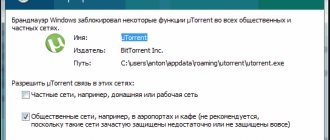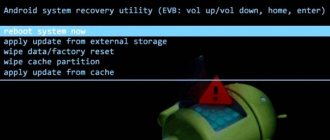In about 2 years we have already seen how much the Android system has changed and how seriously Google has improved it, making it convenient, fast, with a smooth interface, and with enormous capabilities. Now we can confidently say that Android is in no way inferior to its main competitor iOS.
However, sometimes you can notice that an Android smartphone or tablet starts to work slower. This happens especially often if you work with the device for a long time. If you compare the operation of the device immediately after purchase and after a few months, you will be unpleasantly surprised to admit that the difference is obvious. Switching between running applications is already slow, launching an application makes you wait a few seconds, which was not the case before. Everything can be hidden in a very simple reason - too many applications are launched when the device is turned on and then they continue to work in the background, clogging up memory.
This can often be seen on Android smartphones and tablets with 1GB of RAM or even less, since this becomes the minimum required for Android for normal operation. Don't worry, as there is a simple solution to the problem. There are many applications from independent developers who actively promote their own solutions to optimize the operation of the operating system.
We decided to choose as an example the very useful BootManager application, the name of which already speaks for itself. We can manage all applications that are loaded together with the system itself at startup. In BootManager, you can manually set the selection on those applications that really need to be loaded, and which ones simply take up additional memory and resources. By editing the list of automatic download applications, you can relieve the load on the system and improve performance.
Don't be afraid to work with BootManager. First you need to install the Xposed framework, which can be downloaded from this link. You will also need root rights to install. It's worth worrying about this in advance.
Once you have everything installed, launch the BootManager program and you will see a complete list of applications that automatically load when you turn on your Android device. It is worth noting that the free version of BootManager does not display system applications and you can edit the startup list only of those applications that you installed yourself.
It’s very easy to remove an application from the automatic download list - click on the application name and that’s it, it will no longer download when you turn on your Android smartphone/tablet. All disabled startup applications will be highlighted in red in the list.
The above method offers an accessible tool for many to disable unnecessary applications from startup, which will help significantly improve the performance situation; there will be more free RAM, which is more needed for multitasking and for working with really necessary applications.
You can download the BootManager application in the Google Play market using this link.
Updated 2020.02.29:
An alternative program for disabling system applications is Autostarts. Also, with its help, you can monitor the resource consumption of all processes and decide which ones should be disabled and which ones should be left.
It is worth noting that you carry out all actions at your own peril and risk, and the consequences of insufficient knowledge or inattention may be the following: unstable system operation, application errors, application crashes.
Found a mistake? Select it and press Ctrl+Enter
We looked at how to disable background applications on Android. But disabling applications does not guarantee that they will not start again after some time, and rebooting the device completely negates all efforts. This is because some applications have an autoload function and are launched along with the system. In this article we will look at several options on how to disable autorun programs on Android. There are no built-in tools for disabling autoloading in the system, so we will need special applications and ROOT rights
How to disable autorun of programs on Android using the BootManager module
BootManager is a module for the Xposed Framework (installation instructions) that allows you to easily and conveniently manage your startup list. To use it, you will need superuser rights (ROOT) and the Xposed Installer installed.
Procedure for installing BootManager
:
- Launch the Xposed Installer app
- A message will appear in the notification shade stating that the module is not yet active. Click on it, and then in the window that appears, check the box next to BootManager
- Reboot your device
» through the search, find the BootManager
and install it
You can also download the BootManager module from Google Play, but you will still have to activate it and reboot the system.
Then launch BootManager, it will scan the applications on the device and list them. How to remove programs from startup? Just click on those in the list that appears that you want to disable autorun. The selected programs will be highlighted in red - this means that autoloading is disabled for them; the next time you turn on the device, they will not be launched.
It is worth mentioning separately that the free version of the program only shows applications that you have installed. The list of system applications can only be seen in the paid version of the program.
Removing an application from autorun is quite simple: you just need to tap on the application you need in the list. Disabled applications will be highlighted in red in the list.
How to remove programs from startup using Greenify
After installation, Autostarts will scan all system and user applications for startup rules and provide a list of events that cause applications to launch. Each line contains an information icon, clicking on which will show a list of applications launched by this event. Click on any process - you will receive brief information about it and a button to disable autoloading. The names of applications for which you disable startup will be crossed out.
There is also a program AutoStart - No root, a feature of which is the ability to disable autostart of programs without obtaining ROOT rights. The principle of operation of this program is similar to the previous one, but it cannot work with system programs.
If your device has experienced problems with operating speed due to a large number of installed applications, then after correctly setting up autorun, the operating speed is guaranteed to increase. Also, disabling autoloading has a positive effect on battery life.
What to do if the Android application does not sync or does not receive notifications from it?
You most likely turned off startup or closed the background processes of the desired application. To make the application synchronize again and send notifications, simply enable auto-download for it.
Android users often notice that their devices become slower over time. There can be many reasons for this phenomenon, but one of the most common is the running of currently unused applications in the background. Here we will look at how you can disable automatic startup and what to do if the application annoyingly tries to start again and again.
Why disable automatic start?
Everything running on your device affects the available memory, processor, and battery power.
For the most part, this isn't a problem since Android is designed to always have apps in RAM so you can use them quickly. If performance begins to decline, the system itself begins to close the least used ones in order to maintain speed. For this reason, it may be counterproductive to kill applications with third-party task killers, since Android prefers to run in its own environment. But if one of your installed apps insists on launching even when you don't need it, and then sits in the background, you may find that your device starts to feel sluggish or the battery drains noticeably faster. In this case, it is necessary to check the operation of all unauthorized applications. Sometimes the problem arises due to poor coding or obvious software “bugs”. Battery life may be reduced if the application uses GPS or other location-based features.
A good rule of thumb is to keep only what Google provides on your device. The exception is various applications from Google Play (books, movies and TV, press and music), each of which can be stopped without causing any system failures. Android protects itself quite well, so even if you carelessly try to terminate some important process on your device, the system itself will correct you without causing catastrophic consequences. This is useful to know.
The sad truth is that if an application has an auto-run feature, it can be quite difficult to rein it in. Let's look at the different options.
Installing and using the BootManager module
To disable autostart of applications on Android, you first need to activate the BootManager module. This is done in several stages:
- First you need to run the Xposed Installer utility.
- Next, open the “Downloads” section, which contains the BootManager module. Search will help you with this.
- Then click on the name, and then use a swipe to open the Versions tab. In this window, click the "Download" button, which will download and install BootManager on your device.
- After completing the actions, a notification will indicate that the module is still not active. Click on the notification and check the box next to the module name.
- Reboot the gadget, after which BootManager will become active.
The BootManager module can be installed separately via . In this case, its activation proceeds in the same way as when installing through the Xposed Installer utility. Here you also need to open root rights and install it on a mobile device.
The BootManager icon will appear in the application menu, designed to quickly launch the program. After startup, a list of applications that are automatically loaded with the device will be displayed on the screen. The paid version of the module will show absolutely all applications with autorun. The free one will display only programs installed by the owner of the device. Clicking on any of them will disable autostart. The program name will turn red. It should be understood that disabling autorun of some processes may lead to the operation of your smartphone or tablet. For this reason, do not take rash actions.
How to disable auto-start applications: if you have Marshmallow installed
If you notice problems with your device's performance, you need to look at what apps are running.
The procedure is slightly different depending on which version of Android you are using. If you upgraded to (Android 6.0.1), you need to enable developer mode before you can access the information. To do this, go to “Settings> About Phone” and click on the “Build Number” section several times until the message “You are now a developer!” appears. (You are now a Developer!). After that, return to “Settings”, where a new section “Developer options” will appear.
Open this section and select “Running services”. You will see a detailed list of active applications, indicating how long they have been running since launch and their impact on system operation.
Select any of them and you will be given the option to stop the application or get a report. If you click Stop, the program should close. In some cases, it is necessary to stop several different processes running by the same application, after which the program will safely close.
Sometimes it happens that after closing the application automatically starts again. Therefore, it is worth checking this section periodically. If this happens, it may be best to remove it completely, as preventing AutoPlay apps from restarting can be a challenge.
How to disable auto-start applications: Doze function
The Doze feature in Android Marshmallow allows you to minimize the impact of background applications.
Essentially, it “freezes” the launch of applications when the smartphone is in your pocket, lying on a table or in a bag, and, in general, when it is not connected anywhere and the screen is off. To check if Doze is enabled for your smart apps, go to Settings > Battery and tap the three dots in the top right corner. After this, additional options will appear, including “Battery Saver” and “Battery Optimization”. Select the latter and you'll see a list of apps that haven't been optimized. If you find your “naughty” application there, tap on it, select “Optimize” and click “Done”. Now Android will control it more tightly throughout the day.
Apart from the settings described, there are practically no other ways to stop applications from automatically launching, unless you use solutions from third-party developers (task killer). However, this is far from the best solution, as these programs interfere with Android in many ways. Therefore, if the application does not want to obey you, you should delete it and find a more acceptable alternative. Fortunately, their choice is huge.
All-In-One Toolbox
All-In-One Toolbox is an application for improving operating system performance. The program makes it possible to optimize the use of the gadget's memory, and also removes unnecessary files from the phone.
To disable startup applications, you need to go to the “Startup” section, which is located in the main window of the utility. The application will begin scanning the operating system. When the analysis process is completed, a detailed list of applications that launch with the gadget will open.
How to disable autorun applications: if you are using outdated versions of Android
In Android 4.0 and above, there are a couple of different options for killing an application.
To find out which ones are sucking up your resources, go to Settings > Applications and scroll down to the Running section. Find the application you are looking for there, select it and simply click the “Force Stop” button. The same result can be achieved by “tapping” the “Recent Apps” button on the home screen (the square usually located to the right of the Home button) and then using a finger movement (“swipe”) to remove the unnecessary program. Unfortunately, none of these methods will prevent the application from restarting on its own. Therefore, if you really need it and want to keep it on your smartphone, you will have to use a third-party task manager to disable autorun.
How to disable autorun applications: third-party solutions
The most popular task managers/killers are Greenify, Purify and Doze, each of which works on the same principle as the Doze function in Android Marshmallow, i.e.
Pauses applications when you are not using the device. Each of the programs listed has many additional features, but they usually require root access, which is an additional headache. Rooting your smartphone gives you a deeper level of control over it, but it comes with risks. Therefore, if you are not confident in your technical abilities, it is better not to resort to this option. Autostart of applications is a process accompanied by the spontaneous loading of an application, or one of its parts, to perform tasks in the background. Background mode is the active operation of a process in a closed state. That is, even if you don't use the program, it works. Most programs now work in Android according to this principle.
To make it even clearer, let's give an example from life. For example, any messenger or social network client you know can work in the background, regularly checking for new messages, replies, likes, posts, and so on. Even if your messenger or client is closed, you can receive a notification that a new message has arrived. In order for a client or messenger to find out about a received notification, it has to work in the background, constantly checking for the presence of these same messages. Even if the smartphone screen is turned off and all recently launched processes are closed, the messenger or client will work.
There are two types of applications running in the background, namely:
- With auto start;
- With active work in the background.
Autorun applications. They are activated along with the system and always work in the background. Such programs include clients, instant messengers, utilities for displaying weather, launchers, widgets, and so on. They never turn off and remain in the background.
Applications with active work in the background. These are programs that are in this mode only when actively working. For example, you started installing your favorite game from Google Play. The service will download the file even if you are currently engaged in other processes on the phone. As soon as the game is installed, the Play Market itself will unload from the background and will not appear there until the user tries to download/reinstall/update something again. Such applications include players, downloaders, torrents, browsers, and so on.
Autostarts
This application allows you to gain complete control over startup. Using the utility without administrator rights is pointless, because the programs will be back in their places every time you reboot.
The software carefully and with due meticulousness puts everything on the shelves. In the menu you can configure what will be launched before, during and after loading the operating system. All processes are deciphered in as much detail as possible, which makes it possible to determine their interference with the platform with byte accuracy.
The interface is simple and the tools are intuitive. In addition, the application is completely Russified, so no problems should arise. Here in the menu you can free up memory on internal and external drives, as well as play with the battery consumption settings. The last point allows you to disable a good half of the system processes when the charge is low and return them when the charge is high. Thresholds are easily adjusted in percentages.
The product has both paid and free modifications, but, as in the case of Greenify, the first is completely unnecessary for ordinary users.
November 25, 2020 at 02:47 pm
- Android development
- Features of Fast boot mode in HTC devices.
It is known that HTC devices do not reboot in the classical sense, but use the so-called. Fast boot mode (this is a form of hibernation), saving the OS state to disk. Therefore, the ACTION_BOOT_COMPLETED message is not sent by the system, because no reboot actually occurs (). Instead of ACTION_BOOT_COMPLETED, the system can send the following messages: In your application, specify the above messages in the “receiver” tag in addition to ACTION_BOOT_COMPLETED. In addition, it is necessary to register permission in addition to paragraph 1:
Practice: errors and operating features
Let's look at the mistakes that beginners make when setting up an application and in the code.
Debugging the receiver in the emulator and on real devices.
Results
To ensure that your application runs on boot on all devices, the manifest should at a minimum look like this:
The receiver code will typically be like this:
Public class BootCompletedReceiver extends BroadcastReceiver { public BootCompletedReceiver() { } public void onReceive(Context context, Intent intent) { if (intent.getAction().equals(Intent.ACTION_BOOT_COMPLETED)) { Toast toast = Toast.makeText(context.getApplicationContext( ), context.getResources().getString(R.string.your_message), Toast.LENGTH_LONG); toast.show(); Log.d("myapp", context.getResources().getString(R.string.your_message); // your code here } } } I hope this article will help beginners overcome the "insidious enemy" called "ACTION_BOOT_COMPLETED".
It will take a lot of time to disable autostart applications manually one by one, but there are programs that will do it for you - “in bulk”.
Note: I do not write download links. All programs are free in Russian, so you can easily download them from the play market.
Just enter the exact name in the google store and the program will appear first in the list.
ATTENTION: all programs practically do not require root rights (root), although system files will still be needed, but most likely not for all.
What are the consequences of apps constantly running in the background?
If you have several programs running in this mode, then this is normal. At the same time, it is quite acceptable practice that exactly those processes are launched that, it would seem, are not needed at all now. For example, you should not unload the browser from RAM, since it does not create a high load on the system, but at the same time, each launch of it will not “clog” the processor, but will only be unloaded from RAM. Also, do not remove Google services, launcher applications, widgets, instant messengers and other programs with push notifications from autorun.
The number of processes allowed to run in the background is calculated directly from the amount of RAM and their gluttony. For example, if you have 4GB of RAM, it is quite normal for you to load it at 1GB. If only 1GB is free, then it’s definitely worth turning off several programs from startup.
To calculate the rate for your device, use a simple formula: look at how many applications you have running in the background. All these utilities are shown in the settings, in the “Memory” section and are displayed as running processes. If there are a lot of them, but they all take up about 10-40 MB, then they will not cause much harm. Often, such applications hang in autorun for a faster start, to search for updates, send anonymous statistics, try to receive new notifications, and so on.
If there is an application in the background that is used very often, and it takes up a tiny amount of RAM, do not touch it. But if you launch it very rarely, and it still hangs in active tasks, feel free to disable it.
Pay special attention to programs that take up 10% of RAM. They should be turned off as much as possible. But if among them there are instant messengers, Google services and other important processes that you need, then it is better to leave them. The analogy is simple: if you often use a utility or program, then you should not disable it. It is quite normal to have about 10 applications running in the background, of which 5 are not used that often.
Greenify
Greenify is an application for increasing gadget performance by disabling programs that run in the background. After launch, the utility will begin analyzing the smartphone, and then a list of programs that run in the background will be displayed - they are launched along with the gadget.
Select one or more applications that you want to disable and click on the green checkmark icon in the lower right corner. The selected utilities will be transferred to the “Suppressed” section. Thanks to this program, there is no need to delete applications that run with the Android operating system. It is enough to simply put them into “sleep mode”.
How to disable an application from autorun?
Technically, you cannot disable an application from autorun. But you can limit its operation in the background, although this is the same as disabling autorun, just the names are fundamentally different. To do this, follow the steps below. But keep in mind that the described method is only relevant on the new version of Android 8.0 Oreo. If you have an older version of Android, then use the second method, which is discussed below.
Instructions for Android 8.0 Oreo
This way, you can easily disable applications from startup by simply turning them off from running in the background.
Android is a well-thought-out operating system, so it itself recognizes processes and programs that may be running in the background and allows you to disable them. And if the application cannot work in this mode and launch automatically, this slider will not be provided initially.
Adding to autorun
Now let's see how to enable autorun applications on Android. Here you will also need third-party tools. The simplest and most convenient of them is “AutoStarts – No root” from the developer Guro Labs. Using this utility, you can create a list of programs that will start when the OS starts with a specified time interval. After installing the application from Google Play, launch it, then click the “ADD” button next to the “Applications” option and select the application to add to startup from the list that opens.
Repeat the procedure for other programs. If the application you need is suddenly not in the list, check the “Show all applications” checkbox. All that remains is to activate the autostart of applications on Android when you turn on the device, for which you simply switch the “Auto startup” button to the “ON” position. Additionally, AutoStarts supports setting the autostart delay (Start delay) for the first program and all others in the list.
Unlike Windows, managing application startup in Android is quite inconvenient. Adding a program to startup in this operating system is easier than removing it. Many programs, including third-party ones, run in Android as background services, starting with a higher priority, so disabling them is problematic. In most cases, everything is resolved by obtaining Root rights, but this is not the best solution, since rooting reduces the security level of the device.
source











